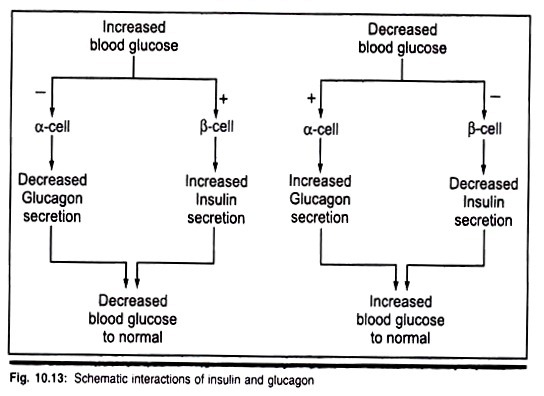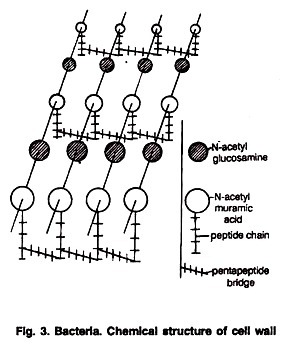Eyes are the chief organs of vision in human body and hence termed as photoreceptors.
The paired eyes in man are located inside bony sockets of skull called orbits. An eye is almost a spherical ball, guarded by two eye lids: upper eye lid and lower eye lid which can move frequently.
These eye lids are bordered by hairs forming eye-lashes. In man the third eye lid is vestigial and lies at the corner of the eye and is known as plica semilunaris. On the margins of eye lids are small Meibomian glands which secrete an oily substance for lubricating the eye lids and for holding a thin film of tears underneath.
Below the outer corner of the upper eye lid are lacrimal or tear glands to produce tears that keep the eye ball (conjunctivae) moist. The tear flows across the front of the eye and excess of tears at the time of emotion are drained into the small lacrimal sac (Fig. 1.22) at the inner margin from where they are then discharged by means of nasolacrimal duct into the nasal passage ways.
Functions of Tears:
1. Lubricate the surface of the eye ball.
2. Wash away dust particles fallen on the surface of the eye ball.
3. Help in killing germs thus prevent infection.
4. Communicate emotions.
The eye ball has six extrinsic muscles which move the eye ball in the orbit. They are: superior oblique muscle (for downward movement), inferior oblique muscle (for upward and outward movement), medial rectus muscle (for inward movement), internal rectus muscle (for outward movement), superior rectus muscle (for upward movement) and inferior rectus (for downward movement) (Fig. 1.24).
The eye ball is formed of three coats, an outer sclerotic, middle choroid and inner retina (Fig. 1.23). These muscles are attached in the bony sockets at one end and the other end of these muscles is attached to the outer coat of the eye ball. These muscles together are responsible for the movement of the eye ball from side to side and up and down, thus controlling the direction of vision.
(i) Sclerotic:
It is the outermost layer of the eye ball and is formed of a tough layer of modified fibrous connective tissue. On the front side it is transparent and non-vascular and known as cornea. Over the cornea another transparent but vascular membrane called conjunctiva is present which is an extension of the skin of the eyelid. The sclerotic layer gives shape to the eye ball, protects the eye and provides surface for attachment of six extrinsic muscles.
(ii) Choroid:
It is the middle layer lying below the sclerotic. The choroid is made of loose but highly vascular connective tissue having dark brown pigment. In nocturnal mammals this layer contains a silvery connective tissue (tapetum) for reflecting light causing the eye to shine at night. In front the choroid thickens as a circular ciliary body.
It contains blood vessels, glands and ciliary muscles. In front of the ciliary body, the choroid separates from the sclerotic and passes inwards as iris which possesses a circular aperture in the centre called pupil. The muscles of iris can alter the size of the pupil. Behind the iris is a transparent biconvex lens, which is attached to the ciliary body by suspensory ligaments.
The iris and lens divide the cavity of the eye ball into a small, anterior aqueous chamber and a large, posterior vitreous chamber. The aqueous chamber is filled with a watery aqueous humour; while the vitreous chamber is filled with a gelatinous vitreous humour. The aqueous humour contains about 98% water, protein and sodium chloride.
It maintains intraocular pressure, acts as a refractive medium, supplies nutrition to lens and drains away metabolic wastes. Vitreous humour is a jelly like material and almost has same composition as aqueous humour. However, it contains less glucose but higher concentration of pyruvic acid and lactic acid. A lymphatic vessel is found in the vitreous chamber passing from the lens to the blind spot and is known as hyaloid canal.
(iii) Retina:
It is the innermost layer of the eye ball and consists of two sub-layers:
(a) An outer layer of pigment cells lying immediately after the choroid; and
(b) An inner retina proper consisting of two types of visual cells—rods and cones (Fig. 1.25 and 1.26).
The rods contain rhodopsin pigment or visual purple which can distinguish various degrees of light and darkness. The retina of the nocturnal animals is mainly formed of this pigment and enables them to see in dim light. Cones contain primarily iodopsin pigment and some cyanopsin which are concerned with colour vision.
Recently three other pigments have been found in human eye, they are erythrolabe, chlorolabe, and cyanolabe which are sensitive to red, green and blue light respectively. These pigments appear to be located in cones and may be responsible for colour vision.
Rods and cones are not evenly distributed in retina. The shape of the cones is pyramidal while the rods are cylindrical. However, the shape of the cones varies in different parts of the retina. Each eye contains about 100 million rods and about 7 million cones. A small area on the retina in line with optical axis is called the yellow spot or area centralis which contains large number of cones.
In the area centralis is a small depression, the fovea centralis, which is the area of the sharpest colour vision. Behind yellow spot, in the middle of retina is present a blind spot which lacks both rods and cones. From this spot the optic nerve arises.
Working of the Eye:
Light rays reflected from an object pass through the conjunctiva, cornea, pupil before falling on the biconvex lens. The size of the pupil determines the amount of light that will enter into the eye ball. The size of the pupil enlarges when the intensity of the light is low and the size diminishes when the intensity is high.
The light rays are then focussed on the retina by the biconvex lens, so that a sharp inverted image is formed on the retina. The impression of the inverted retinal image is carried by the optic nerve to the brain where it is being interpreted. The eye can see objects both far and nearby adjusting the focal length of lens i.e., by changing the curvature of the lens. This is called as the power of accommodation of the eye.
Normally the lens is focussed for distant object in animals; in this condition the lens is kept flattened by the suspensory ligaments. When near objects are viewed, the lens become more complex by the activity of the ciliary muscles, the curvature of the lens is reduced, pupil contracts and an inverted image of the object is formed on the retina.
In higher mammals including man the fields of vision of two eyes overlap or even coincide. It is known as binocular vision. However, in some animals like rabbit, each eye covers a different field of vision, this is called monocular vision.
Common Eye Defects:
1. Myopia or Short-sightedness:
People having this eye defect can see near objects clearly but not distant objects. In this case the lens of the eye is too convex and the rays of light are focused at a point in front of the retina instead of upon it. This defect is corrected by the use of concave lenses (Fig. 1.27).
2. Hypermetropia or Long-sightedness:
A farsighted person can see distant objects clearly but not near objects. In this case the eye ball is too short, so that the retina is too close to lens and the focusing point lies behind retina. It is corrected by the use of convex lens (Fig. 1.27).
3. Astigmatism:
This abnormality of vision is due to the irregularities in the shape of the lens and cornea. The lens shows different curvatures in different regions of the eye. So the light rays are not brought into sharp focus on the retina. This defect is corrected by the cylindrical lens.
4. Presbyopia or Old-age Sight:
It is due to the loss of flexibility of the lens in the old age. The person feels difficulty in focussing on near objects. This defect occurs at any time after the age of 35. It is corrected by the use of convex lens.
5. Cataract:
In this type of eye defect the lens become opaque due to several reasons. The person cannot see the objects clearly as the light rays do not pass through it. Surgical removal of the lens and its replacement by a convex lens is the only remedy of this disease.
6. Glaucoma:
In this abnormality, the pressure within the eye is raised above the normal value i.e. 15-20 mm. The intra-ocular tension is increased which ultimately causes blindness.




